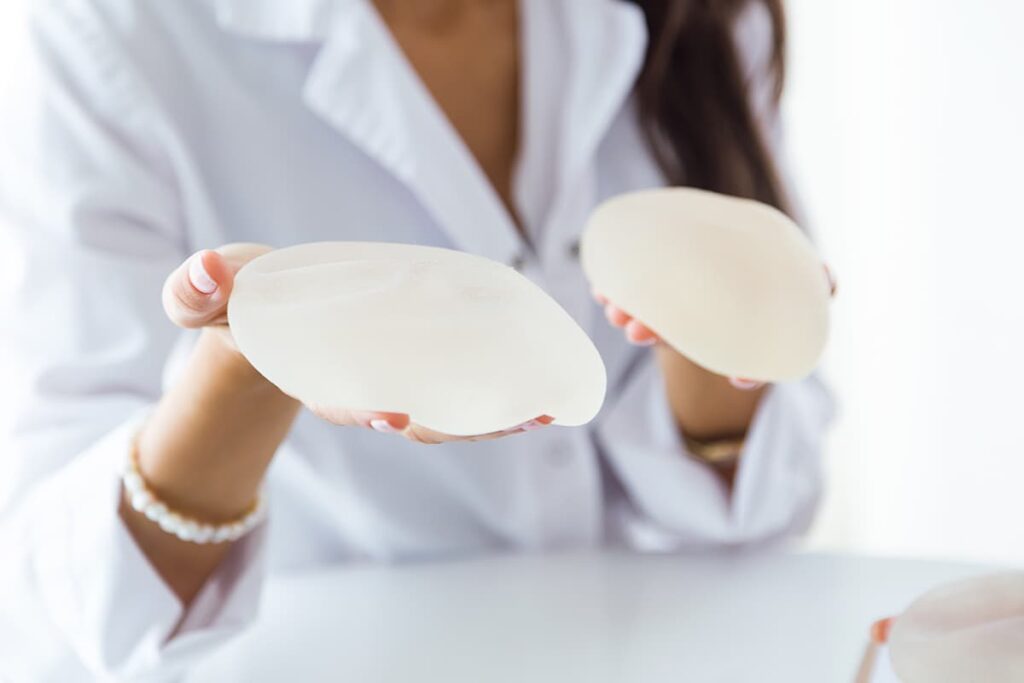Breast augmentation
Breast augmentation is the most common breast surgery. This procedure aims to increase the volume of the breasts. It is based on multiple techniques that can be combined: breast implants (the most common option), breast lipofilling (injection of fat into the breast to increase its volume after liposuction), or composite breast augmentation, which is a combination of the two. It is intended for women who wish to improve their figure or compensate for a loss of volume, for example after pregnancy or weight loss.
Breast reduction
Breast reduction involves removing excess glandular tissue, fat, and skin from overly large breasts (breast hypertrophy). Breast hypertrophy is often associated with sagging breasts. This procedure provides relief for women who suffer from back pain due to overly large and heavy breasts. The scars on the breast vary depending on the type of breast reduction: vertical scar (scar around the areola and under the areola) or inverted T-shaped scar, also known as an anchor scar (scar around the areola, under the areola, and in the inframammary fold).
Breast ptosis
Ptosis refers to the drooping or sagging of the breasts. There are three stages of breast ptosis: in the first stage, the nipple is still slightly above the inframammary fold; in the second stage, the nipple is just below the inframammary fold; and in the third stage, the nipple is well below the inframammary fold. The surgical procedure to lift the breasts is called a mastopexy. In general, the more advanced the stage of ptosis, the more significant the scars will be. Depending on the extent of the ptosis, the scars vary: around the areola, vertical under the areola, or inverted T-shaped. The size of the areola can often be reduced during this procedure, which is a significant aesthetic advantage.
Gynecomastia
Women are not the only ones who undergo breast surgery. Many men are affected by gynecomastia, which is excess breast tissue in men. There are three types of gynecomastia: true gynecomastia, which is the appearance of glands during puberty that do not disappear; pseudogynecomastia (also called adipomastia or lipomastia), which is an accumulation of fat often linked to excess weight; and a combination of the two. Varying in severity, it can be a source of major discomfort and complexes that often complicate everyday life. The psychological and sexual impact is often significant. Many procedures are available with excellent results, thanks to techniques combining liposuction and/or removal of the gland.






